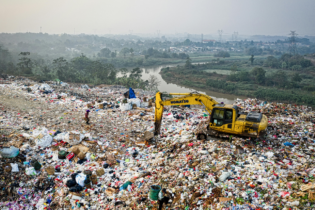As the South African Chemical Industry celebrates 100 years of existence, it brings with it the reminder of how chemistry has drastically improved our lives in the last century and its potential to play a vital role in our futures – even as the global economy moves towards environmentally sustainable economic development.
It’s imperative for South Africa to embrace green chemistry and solutions that will deliver alternative energy solutions, because for a relatively small economy, South Africa is one of the world’s most carbon-intensive. In 2007, SA produced total carbon emissions of 453 million tons, and annually produces 9.4 million tons per capita of carbon emissions. This ranks SA at an unacceptably high 13th place in global carbon emissions due to a high reliance on coal for electricity and liquid fuel needs. Werner van Zyl is the current Secretary of the South African Chemical Institute (SACI) Green Chemistry division based at UKZN School of Chemistry and Physics. He says, “The future of a green and sustainable energy solution in South Africa and worldwide lies fully within the realm of chemistry.” According to van Zyl, South Africa in general has not yet caught onto the importance of the industry. “Most universities in the country have a Faculty of Health, but none have a Faculty of Energy or Sustainability. Every decision taken should have our energy future in mind.” Van Zyl believes the first university to make this jump would be 10 years ahead of its time. Dr Vincent Nyamori, Chair of the South African Chemical Institute’s (SACI) Green Chemistry division from the School of Chemistry at University of KwaZulu Natal agrees. “In South Africa, our current energy usage is finite and mainly relies on coal, which has an undesirably high carbon footprint, as a raw material. Finding grand solutions will ultimately rest on the shoulders of scientists, and in particular, chemists have a huge role to play.” But the chemical industry is an often overlooked key to the generation of new and alternative energy solutions. “Despite the importance of the chemical industry for the betterment of society it is sometimes viewed in a poor light because of the detrimental effects of some of its initiatives,” says Dr Nyamori.One of the many roles of a green chemist is to have the negative public perception reverted, especially with regards to energy generation, and this can be achieved by having innovative devices or designed methods to improve energy efficiency. Green chemistry can devise methods to garner solar energy for use in water purification and splitting water into oxygen and hydrogen where the latter is used as a fuel. The steps involve the use of catalysts such as algae, which are derived from nature and are renewable and sustainable.
According to van Zyl, to innovate and explore these new methods is going to require more investment into South Africa’s green chemistry industry. “There are solutions that need more funding and support. Wind energy will probably become a long-term solution. But the biggest game changer will ultimately come from the sun and water. Photocatalysts need to be developed that can split water into hydrogen and oxygen components in much the same way as done during photosynthesis. If that can be done with reasonable efficiency, there is enough energy density locked up in the covalent bonds of a water molecule filling a standard swimming pool to serve all South Africa’s energy needs for a year.” The costs of renewable resources are currently high, but they can be made economically and technologically viable through green chemistry. Van Zyl adds, “It is not so much that developing new photovoltaics (a form of renewable energy developed by green chemistry) is currently expensive as it is that fossil fuels are so cheap! But this will not last forever, and when our non-renewable energy sources run out, we had better have non-carbon based solutions for our children and their children.” The symbiotic relationship between green chemistry and renewable energy is undeniable and South Africa is exploring some exciting opportunities, says Dr Nyamori. South Africa is currently part of a tri-lateral nano-technology initiative, together with India and Brazil, to incorporate nano-materials in photovoltaic cell materials to improve solar energy efficiency. “This research will enhance our capabilities to harness solar energy which is a clean and sustainable source that can meet current and future energy demands. Solar energy can be a very effective means of providing the necessary clean energy for sustainable development; especially in the context of poverty alleviation, clean water, remediated or uncontaminated environments, green cities, and other positive growth and developmental markers,” he concludes.






